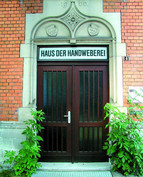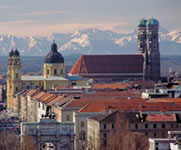Other highlights
Contact
Sindelfinger Veranstaltungs-GmbH
Schillerstrasse / Stadthalle 23
71049 Sindelfingen
Email:
info@svg-sindelfingen.de
Internet:
www.svg-sindelfingen.de
Schillerstrasse / Stadthalle 23
71049 Sindelfingen
Email:
info@svg-sindelfingen.de
Internet:
www.svg-sindelfingen.de
Museums

Opened in 1958, Sindelfingen municipal museum is located in the Old Town Hall built in 1478 and the neighbouring salt house, in the heart of the town's medieval quarter. Covering 450m², the exhibition spans the period from the prehistoric era to the 19th century. Archaeological finds shed light on the Romans and Alemanni who once inhabited the town, and paint a picture of everyday life in the Middle Ages. Other highlights include a wood-panelled farm parlour from the 19th century and a detailed model of Sindelfingen circa 1830. The permanent exhibition is dedicated to the various trades practised down the ages. Most prominent here are farming and weaving, in keeping with their strong tradition in the region. Closed on Mondays.
» www.svg-sindelfingen.de
The old weaving school built in 1900 has been home to Sindelfingen's Museum of Weaving since 2000.In the 19th century Sindelfingen was a well-known centre for hand weaving in the region. The museum focuses on the day-to-day lives of the home weavers, many of whom earned their money from both weaving and farming. A detailed picture is built up of this regional tradition. Exhibits include the tools used by the weavers, among them three looms, a wide variety of textiles produced in Sindelfingen, patterns, documents and plans. The museum also offers weaving courses, putting a practical slant on this old-established trade. Open daily.
» www.svg-sindelfingen.de
"Danube Swabians" is the collective term for ethnic Germans in the former Kingdom of Hungary. The museum dedicated to their history is located in Sindelfingen's Goldberg district. Opened in 1970 in the 'House of Danube Swabians', it contains a wide-ranging collection of historical artefacts. The museum has become the spiritual home and cultural centre for Danube Swabians in Europe and overseas. It has a gallery, a local history section with authentic furniture, fascinating displays, original documents and an extensive library of Danube Swabian literature. There is also an interesting collection of around 200 pictures by more than 35 artists, documenting the artistic talent of the Danube Swabians. Learn about their settlements, society, economy, religion and culture. And see how they came to be dispersed across Eastern Europe, and why they were driven out. Open Monday to Friday.
» www.svg-sindelfingen.de
Opened in 1994, the Museum of IBM Data Processing is housed within the walls of a former punchcard printing company. IBM, which stands for International Business Machines, is one of the largest global players in the IT industry. The fascinating museum dedicated to its history covers an area of 500m² and has the world's largest collection of operational IBM products from across the company's history. Take a journey back through 100 years of data processing. The exhibition is divided into sections according to milestones. 1890: Hollerith's statistical system; 1929: a card-controlled tabulating machine; 1935: programmable tabulators; 1948: alphabetic accounting machine, introduction of electronics (programmable memory); 1958: transistors enable smaller, faster, improved machines; 1964: first high-performance systems with wide range of applications; 1970/80: new data storage methods and monitors make punchcards obsolete. There are also various time-recording devices (from 1911) and typewriters (from 1934). Museum is only open to groups who have booked a guided tour.
» www-5.ibm.com/de/ibm/museum/index.html
Travel Planner
Select an option...
Map of Germany
Hotels in Sindelfingen
Loading



